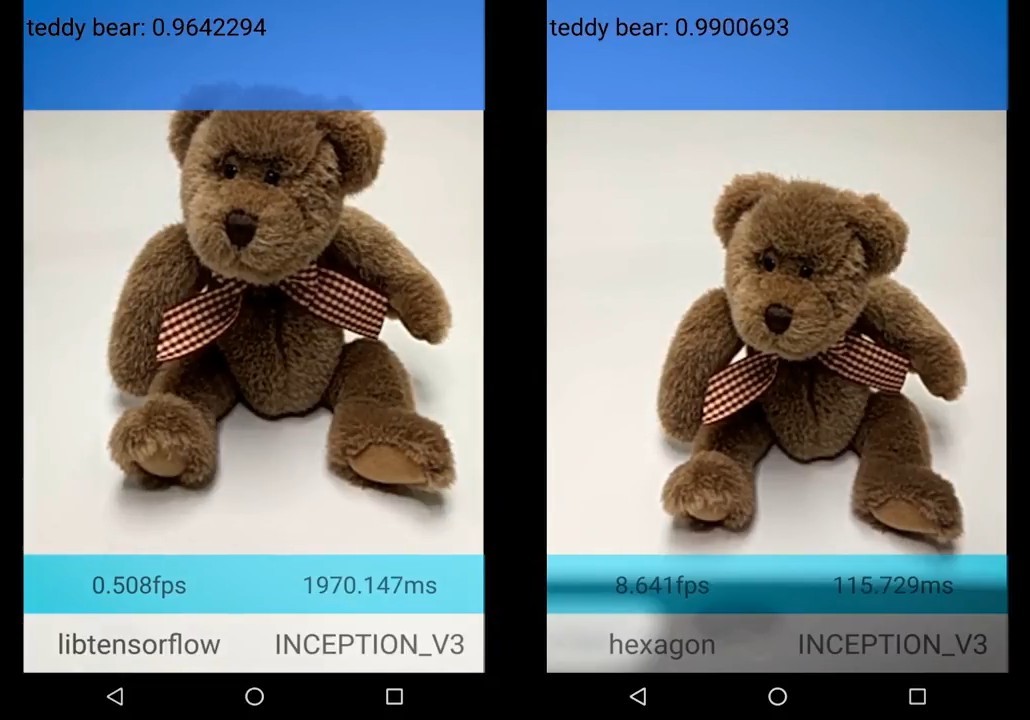Google released TensorFlow 1.0

TensorFlow 1.0 with the new generation Inception neural network model supports hardware acceleration on the Hexagon DSP in Qualcomm Snapdradon 820 mobile processors. The speed of applications like Prism and machine vision programs will increase 8 or more times, and power consumption will decrease 4 times. Filters from neural networks can be superimposed on video in almost real time.
At the first developer conference TensorFlow Dev Summit , Google announced the release of a major release of the library TensorFlow 1.0 , which is backwards incompatible with previous versions. This means that programs running on TensorFlow 0.n versions may not work on TensorFlow 1.0. Google's developers say that changes to the API were needed “to provide internally consistent software interfaces,” and this will not happen again: changes breaking backward compatibility are not planned in future versions of 1.x. Now developers are advised to read the migration guide and use the script for the conversion .
TensorFlow is a free software library for machine learning applied to various types of tasks for perception and understanding of a language. At the moment, it is used in research and development and in dozens of commercial Google products, including Google Search, Gmail, Photos, Youtube, Translate, Assistant, as well as all sorts of recognition systems, including speech recognition.
Other innovations with the release of TensorFlow 1.0:
')
- The Python APIs have changed for greater similarity with NumPy. This is one of the changes with which backward compatibility is associated.
- Experimental interfaces for Java and Go .
- High-level modules of
tf.layers,tf.metricsandtf.lossessoftware interfaces over tf.contrib.learn after merging with skflow and TF Slim. - An experimental release of XLA , a problem-dependent compiler for TensorFlow graphs, working for CPU and GPU. This compiler is developing rapidly, so new releases can be expected soon.
- Appearance of TensorFlow debugger ( tfdbg ) with command line interface and API for debugging running TensorFlow programs.
- New demo for Android with examples of Android applications using TensorFlow.
- Improvements in the installation procedure : Python 3 docker images have been added, and TensorFlow pip packages are now compatible with PyPI, that is, TensorFlow is now installed with a simple
pip install tensorflow.
Now the machine learning framework TensorFlow is reaching a new level: it is officially ready for use in production. Google said that software interfaces are now "more than ever" have "production-ready" status.

Using neural network in Gmail to compile an automatic short response to a letter with context analysis (the text of the incoming letter to which you need to make an answer)
The TensorFlow library was originally developed by Google Brain’s research and development department for the company's internal needs, but in November 2015 it was released under the free Apache 2.0 license. The direct predecessor of TensorFlow at Google was DistBelief, the first-generation proprietary system. Later, well-known specialists, including Jeff Dean and Jeffrey Hinton , worked on refactoring and simplifying the code base of DistBelief. They were tasked with preparing a faster and more reliable library, ready for use in many real-world applications. The result of this work was TensorFlow.

In 2016, developers focused on improving the performance of TensorFlow, for example, a multidimensional graph began to occupy less space in memory.
The benchmark implementation of Google's TensorFlow runs on a CPU and a GPU. On graphics processors for graphics cards, calculations are possible in applications for general computing using the additional CUDA extension for GPGPU. TensorFlow runs on 64-bit Linux servers and desktops, Windows and Mac OS X, as well as mobile platforms, including Android and iOS.
TensorFlow calculations are expressed as stateful data flow graphs. The Google library of algorithms instructs neural networks to perceive information and reason like a person, so new applications initially possess these “human” qualities. The name TensorFlow itself comes from the name of the operations that these neural networks perform on multidimensional data arrays. These multidimensional arrays are referred to as "tensors", as mathematical objects of the same name that linearly transform the elements of one linear space into elements of another. The objective of TensorFlow is to teach neural networks to detect and recognize patterns and correlations in data arrays.
Visualization of multidimensional space and t-SNE technology for non-linear dimensional reduction and visualization of multidimensional variables (t-distributed stochastic neighbor embedding)
With such source data, it is not surprising that the open source library TensorFlow quickly became the de facto standard in machine learning, judging by Github statistics.

All the most interesting in machine learning is just beginning. Soon, Google promises to publish in open access a new model of the neural network architecture Inception . This revolutionary development will speed up the work of TensorFlow many times over.
And TensorFlow now supports hardware acceleration on the Hexagon digital signal processor. This DSP is part of a Qualcomm Snapdradon 820 system on chip, which is equipped with modern top-end smartphones.
Together with the Java API, debugger and other tools, the TensorFlow 1.0 library really turns into a powerful advanced platform for developing modern software.
Source: https://habr.com/ru/post/321946/
All Articles